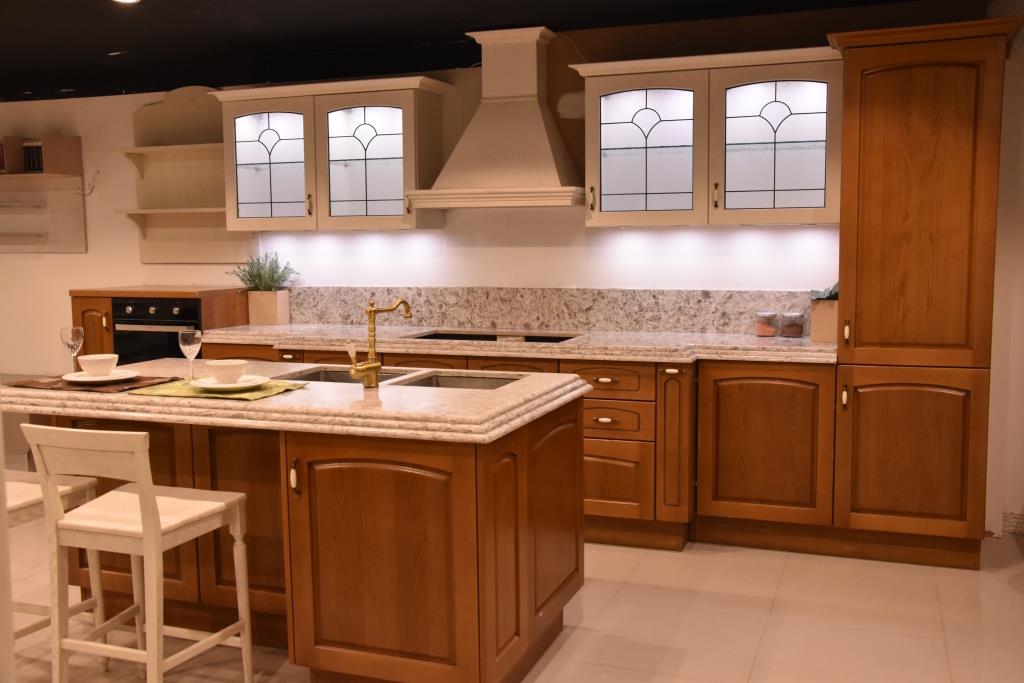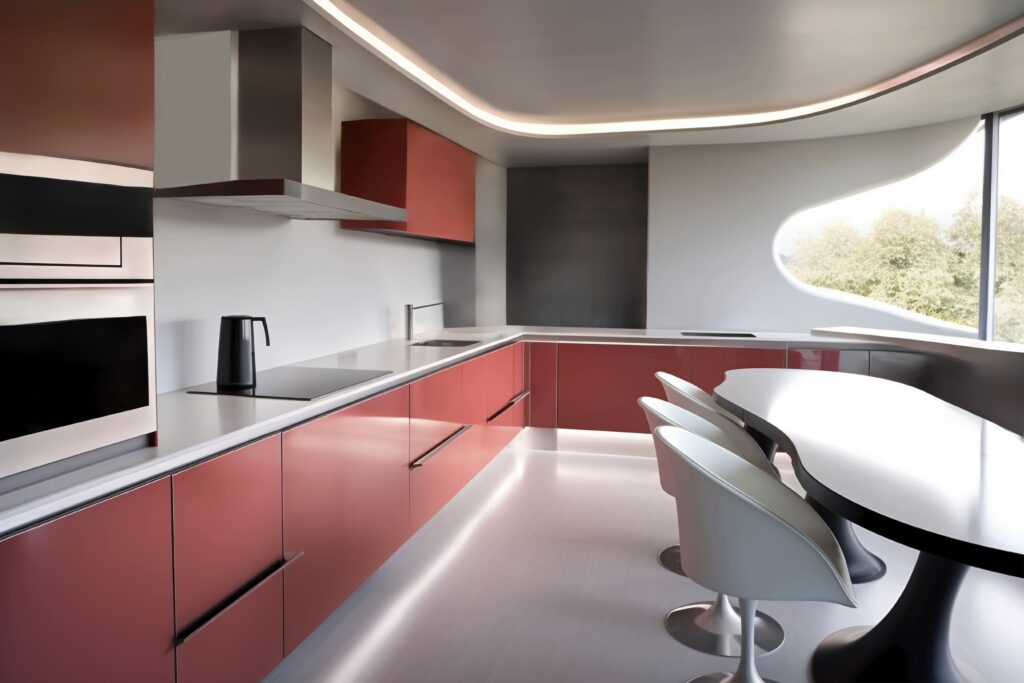Wood kitchens are distinguished by their natural beauty and the warm ambiance they bring to a home, making them a popular choice in interior design. Here is some essential information about wood kitchens:
1. Types of Wood Used
- Oak Wood: Durable and resistant to wear, with light to medium shades that match various colors.
- Cherry Wood: Known for its dark hues with red and brown tones; it’s strong and elegant.
- Beech Wood: Smooth texture and light color, which can be easily painted for color variations.
- Walnut Wood: A luxury wood with rich colors that adds a touch of sophistication.
2. Paints and Finishes
- Natural wood can be coated with transparent layers to protect it from moisture and scratches, enhancing its durability.
- Oil-based or water-based paints are used, each affecting the appearance and durability of the kitchen.
3. Popular Designs
- Classic Design: Features detailed engravings and decorative doors.
- Modern Design: Focuses on clean lines and simple textures, with wood often painted in solid colors.
- Rustic Design: Showcases natural wood in its original shades, sometimes with rough textures.
4. Advantages of Wood Kitchens
- Natural Beauty: Wood adds warmth and a natural feel.
- Durability: Hardwoods like oak and walnut withstand daily use for long periods.
- Adaptability: Wood can be repainted or polished if you wish to change its appearance.
5. Disadvantages of Wood Kitchens
- Moisture Sensitivity: Wood can be affected by high humidity if not properly treated.
- High Cost: Some types of natural wood are quite expensive.
- Maintenance: Regular upkeep is needed to maintain wood’s beauty and durability.
If you’re considering a wood kitchen, pay attention to the type of wood used, moisture protection methods, and design style that fits your taste and home decor.
Wood kitchens come in various types, depending on the kind of wood used, design, and finishing method. Here’s an overview of the main types:
1. Solid Wood Kitchens
- Description: Made from natural hardwoods like oak, beech, cherry, and walnut.
- Advantages: Extremely durable, resistant to scratches and impacts, with an elegant and luxurious appearance.
- Disadvantages: Typically expensive and requires periodic maintenance to protect it from moisture and cracking.
2. Laminate Wood Kitchens
- Description: Uses wood panels coated with layers of resin or laminated paper on the wood surface.
- Advantages: Less expensive than solid wood, scratch- and stain-resistant, and easy to clean.
- Disadvantages: Less durable than solid wood, and edges may wear over time.
3. Reclaimed Wood Kitchens
- Description: Uses recycled wood from other sources, providing a unique look with a rustic style.
- Advantages: Eco-friendly and sustainable, giving the kitchen a distinctive vintage feel.
- Disadvantages: Can be costly and hard to find, may require special treatment to protect against damage.
4. Veneer Wood Kitchens
- Description: A thin layer of natural wood veneer is applied on engineered wood or compressed wood panels.
- Advantages: Provides a natural wood look at a lower cost than solid wood, available in various designs and colors.
- Disadvantages: The veneer can peel over time or get damaged if not well maintained.
5. Rustic Kitchens
- Description: Features wood with natural, raw, or rough details, often using solid or reclaimed wood.
- Advantages: Adds warmth and a unique character to the kitchen.
- Disadvantages: May not suit modern spaces and might need extra care to maintain its quality.
6. Painted MDF Wood Kitchens
- Description: Uses MDF panels with special paint to give a look similar to natural wood or in modern colors.
- Advantages: Provides a wood-like look with a contemporary touch, available at affordable prices.
- Disadvantages: Less durable than solid wood, and paint may get damaged with high humidity or scratches.
7. Hybrid Wood Kitchens
- Description: A combination of various types of wood with other materials like metal or glass for a modern touch.
- Advantages: Allows for diverse designs at a lower cost compared to solid wood alone.
- Disadvantages: Can be prone to wear in areas where different materials meet.
These types offer a variety of options to suit different tastes and budgets.


